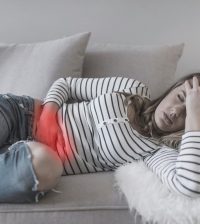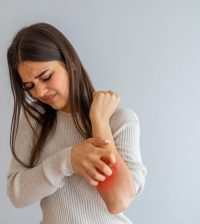- Tips for Spending Holiday Time With Family Members Who Live with Dementia
- Tainted Cucumbers Now Linked to 100 Salmonella Cases in 23 States
- Check Your Pantry, Lay’s Classic Potato Chips Recalled Due to Milk Allergy Risk
- Norovirus Sickens Hundreds on Three Cruise Ships: CDC
- Not Just Blabber: What Baby’s First Vocalizations and Coos Can Tell Us
- What’s the Link Between Memory Problems and Sexism?
- Supreme Court to Decide on South Carolina’s Bid to Cut Funding for Planned Parenthood
- Antibiotics Do Not Increase Risks for Cognitive Decline, Dementia in Older Adults, New Data Says
- A New Way to Treat Sjögren’s Disease? Researchers Are Hopeful
- Some Abortion Pill Users Surprised By Pain, Study Says
FDA Approves First Test to Spot Folks at High Risk of Opioid Use Disorder

A newly approved test can determine whether a person has a genetically driven risk of becoming addicted to opioids.
The AvertD test, the first of its kind, uses a DNA sample swabbed from a patient’s cheek to determine if they have a combination of genetic variants associated with an elevated risk of opioid addiction.
The 15 genetic variants detected by the test are involved in the brain reward pathways that are associated with opioid use disorder, the U.S. Food and Drug Administration explained.
“The opioid crisis, one of the most profound public health issues facing the United States, calls for innovative measures to prevent, diagnose and treat opioid use disorder, including to assess the risk of developing the disorder,” Dr. Jeff Shuren, director of the FDA’s Center for Devices and Radiological Health, said in a statement announcing the approval.
The AvertD test, manufactured by AutoGenomics Inc., is meant to help doctors assess the risk of prescribing opioid painkillers to patients about to undergo surgery, the FDA said.
The test is prescription-only, and is to be used with a patient’s consent if they have no prior use of opioids, the FDA added.
The FDA noted that the test isn’t intended to be used in patients being treated for chronic pain, and should not be used as the sole way to assess a person’s risk of opioid addiction.
“AvertD may help patients who are concerned about being treated with an opioid for acute pain make better informed decisions,” Shuren said.
The approval is based on a clinical trial involving 385 people, according to materials from an October 2022 advisory committee meeting evaluating the test’s merits. Of those participants, 175 had a diagnosed opioid use disorder.
The AvertD test accurately detected those at risk of opioid addiction about 83% of the time, results showed. It accurately ruled out those not at risk about 80% of the time.
However, test accuracy varied between ethnicities. The AvertD test accurately detected risk of opioid addiction about 81% of the time in whites, but nearly 92% of the time in Hispanics.
The FDA also noted that there are risks associated with the AvertD test, mainly false negative and false positive results.
A false positive could lead to a person being denied opioid painkillers even though they have no elevated genetic risk for addiction, the FDA said.
Meanwhile, a false negative could lead to someone becoming addicted because the test indicated they weren’t at increased risk for opioid use disorder.
“The risks of false negative and false positive results can be mitigated, in part, through accurate, transparent product labeling and a health care provider training program,” Shuren said.
As part of the approval, AutoGenomic must provide training to health care professionals to ensure appropriate use of the test, the FDA said.
Some experts are concerned about the test’s use in clinical practice, given that genetics are only one contributing factor in addiction.
“If you just ask people, ‘Do you have a family history of addiction?’ I would hypothesize that that would be a better risk categorizer than this genetic test,” Dr. Katherine Keyes, a professor at the Columbia University Mailman School of Public Health in New York City, told CNN.
More information
The U.S. Food and Drug Administration has more information about AvertD.
SOURCE: U.S. Food and Drug Administration, news release, Dec. 19, 2023
Source: HealthDay
Copyright © 2024 HealthDay. All rights reserved.










